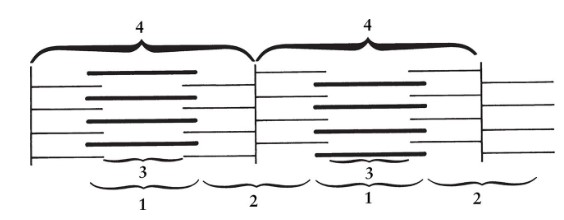Biology is one of the many sciences you must learn to ace the MCAT. There are several concepts, words, and diagrams to master and memorize.
Additionally, unwarranted anxiety and stress on test day can make you forget the information you have been studying. You might end up retaking the exam if you are not well-prepared.
We do not want your MCAT preparation and study to be in vain. So, in this article, we will review the best methods and approaches to review the MCAT biology section.
Please read on.
What is MCAT Biology?
The study of life is called biology. Biologists study living organisms' makeup, purpose, growth, origin, evolution, and dispersion. Biology is essential because it advances our knowledge of the various levels at which organisms interact and perform their functions.
Scientists have created more food to feed a growing human population because of advances in biology. They have also created better pharmaceuticals and disease treatments by better understanding how people may react to environmental change.
Unsurprisingly, biology is heavily weighted on the MCAT.
Thirty-nine (39) out of 59 questions in the MCAT bio/biochem section are about biology. This means that 65% of this section requires your biology background.Additionally, 3 (out of 59) questions in the Chemical and Physical Foundations of Biological Systems, or 5%, are devoted to biology.
Furthermore, the MCAT psych/soc section also includes 5% or 3 biology questions.
Although there is lots of material to cover in your biology review, remember that you do not need to be a scientist or a biologist to succeed in this MCAT topic. To be well-prepared for the test, we strongly advise you to enroll in various biology subjects.
It is a good idea to enroll in more than just the basic biology classes. Not all institutions and universities provide basic classes covering the MCAT biology curriculum. Find out what kinds of courses your university offers to help you with this challenging subject's MCAT preparation.
Summary Table of Biology Distribution in the MCAT
MCAT Section | Biology Subject | Percentage | Number of Questions (out of 59) |
|---|---|---|---|
Biological and Biochemical Foundations of Living Systems | Introductory Biology | 65% | 39 |
Chemical and Physical Foundations of Biological Systems | Introductory Biology | 5% | 3 |
Psychological, Social, and Biological Foundations of Behavior | Introductory Biology | 5% | 3 |
Total Number of MCAT Biology Questions: 45 | |||
Biology Topics to Study for the MCAT
Pre-med students who did not major in biology or biological science fear the MCAT biology portion. They worry that they will not succeed in this section. They also fear that medical schools would question their ability to handle the rigorous academic requirements of medical school based on a subpar biology score.
If that applies to you, do not worry. What matters is knowing the subjects that really matter. Please read the list of subjects you must research for the MCAT below.
How to Review for the MCAT Biology: 5 Useful and Proven Tips
As previously stated, getting a high score on the MCAT is doable. Just be sure you use suitable methods. Use the methods that MCAT test takers who were successful in MCAT biology have used.
We have listed some of the most valuable strategies you should remember to help you review the MCAT biology section.
Read and Examine the Questions Carefully.
Before answering the questions, read the directions to prevent making silly mistakes. This is the time to relax, calm yourself, and gather your thoughts if you feel anxious.
Suppose you can identify the question's keywords and the details it seeks. In that case, you’ll comprehend the question better. Specifying the subject and determining whether the query is application-based or direct is necessary.
Example:
Which statement is TRUE about connective tissue cells?
A. They make up most of the tendons, muscles, and bone cells.
B. The extracellular matrix is created by the chemicals they secrete.
C. They typically constitute the stroma in organs.
D. They support epithelial cells in the organs.
Explanation:
Note that the question asks which of the four statements is correct. All but one is true. Be cautious.
Muscle tissue is a different tissue type from bones and tendons, mostly made of connective tissue cells. Other types of connective tissue include blood, adipose tissue, ligaments, cartilage, and ligaments.
Collagen and elastin are two molecules that connective tissue frequently secretes to create the extracellular matrix. This means that option B is wrong.
Options C and D can be eliminated because they are virtually the same. In organs, connective tissue frequently acts as the stroma or support structure for epithelial cells.
Therefore, the correct answer is option A - They make up most of the tendons, muscles, and bone cells.
Make Intelligent Inferences.
You may encounter difficulties when only two or three contested choices are available after examining the MCQ (multiple-choice) answers. When this occurs, make the most of your guessing ability to save time.
Please limit speculation as little as possible, but remember that it depends on chance.
Remember that your first response was probably accurate as you progress through the passage and maintain it. Don’t waste time second guessing yourself.
Example:
Late in the third trimester, a pregnant woman receives an unintentional single dose of a teratogenic medication. Three days later, the baby is born.
What is the most likely of the following outcomes?
A. The fetus's death and total failure of organ development
B. Partial organ development failure with fetal survival
C. Serious fetal disfigurement|
D. Birth respiratory distress without long-term consequences
Explanation:
According to the question stem, the medicine was administered to the expectant mother three days before the baby was born. Remember that the first trimester is when organogenesis takes place.
The lungs are the last organ to develop full functionality. There was likely no significant impact on the development of any organ due to exposure to the teratogen. This is because the organs were already essentially constituted before the administration of the teratogenic substance, ruling out options A, B, and C.
Due to the sensitive nature of lung tissues and the lateness of their maturation, the baby is expected to have some respiratory distress upon birth.
The correct answer is option D – Birth respiratory distress without long-term consequences.
Analyze and Evaluate Each Option.
To rule out implausible outcomes, look at each response. You can narrow down the choices by deleting unrelated remarks to just one.
As you go, refer to the original question regularly to make sure you are only discarding answers that are unrelated to the one you are answering.
Example:
Which of the following is most likely in a pregnant woman's blood?
A. Fetus-produced immunoglobulins
B. Fetal red blood cells release through fetal hemoglobin
C. Placental cells' progesterone production
D. The carbon dioxide that embryonic lungs exhale
Explanation:
The placenta produces estrogen and progesterone. This is to keep the endometrium healthy during pregnancy. These hormones should be detectable in the mother's blood because they affect the mother's organs and are essential for the fetus' proper gestation. The fetus is immunologically immature before birth and does not make immunoglobulins. This eliminates option A.
However, it should be noted that maternal immunoglobulins pass through the placenta and into the fetus's blood. Fetal hemoglobin cannot easily traverse the placenta. Additionally, red blood cells are considered too big to pass the barrier by themselves, removing option B.
Although maternal blood contains carbon dioxide from fetal metabolism, the lungs are not functioning before birth because the fetus is suspended in amniotic fluid. Direct blood-to-placenta transfer of carbon dioxide from the fetal blood eliminates option D.
Therefore; the correct answer is option C - Placental cells' progesterone production.
Pay Attention to Diagrams.
Reaction diagrams alone may typically be used to answer nearly all biology questions on the MCAT.
To get right to the questions, try skipping the text. You might be astonished to realize that you can answer the questions quickly and accurately.
Make sure you comprehend the skills being tested as you concentrate on the diagrams. Remember that the MCAT emphasizes applying the knowledge you acquired over your study session.
Example:

Which of the following locations shortens during muscle contraction?
A. 1 only
B. 1 and 2 only
C. 3 and 4 only
D. 2, 3, and 4 only
Explanation:
We are given a sarcomere diagram and asked to identify which areas shorten when the muscle contracts. Except for the A-band, all bands and zones of the sarcomere shorten during contraction. That is region 1 in the diagram.
As a result, all of the remaining regions become shorter. The I-band is represented by region 2, the H-zone is represented by region 3, and the sarcomere length between Z-lines is represented by region 4.
This means the correct answer is option D – 2, 3, and 4 only.
Make Use of the Elimination Method.
We usually advise finding the passage section relevant to the particular issue after reading the question.
Reread that section if you require further details to respond to the question.
When you are confident an option is incorrect, start crossing it out. After that, you ought to be able to rule out the possibilities and choose the best one.
Example:
Which of the following claims about growth hormones is FALSE?
A. Adults who produce too much growth hormone develop acromegaly.
B. It supports the development of bone and muscle.
C. The hypothalamus produces it, but the pituitary secretes it.
D. Dwarfism is caused by a growth hormone deficiency in children.
Explanation:
The anterior pituitary directly secretes the hormone known as growth hormone. Among its various roles, GH encourages bone and muscular growth, removing the need for supplementation, which is option B.
In children, excessive growth hormone causes gigantism, whereas, in adults, it causes acromegaly. It is the enlargement of the tiny bones in the extremities and some face bones, such as the jaw. This means that option A can also be eliminated.
Conversely, dwarfism develops from a juvenile growth hormone shortage, which eliminates option D.
The correct answer is option C – The hypothalamus produces it, but the pituitary secretes it.
How Much Time Should You Give Yourself to Study for the MCAT Biology?
Prospective medical students said they averagely study for the exam for three to six months. This involved reviewing the content again, taking simulated tests, attending learning sessions, and engaging in related activities.
You must divide your study time among the four MCAT portions throughout these three to six months.
You must dedicate a minimum of 6 hours every day to learning. Naturally, this does not include your rest day.
Depending on your schedule for that day, you must allow at least 2 hours for every section. However, keep in mind that this could change based on other obligations.
Since MCAT biology is included in three sections of the exam, you should concentrate on MCAT biology throughout your initial phase of preparation for the MCAT. Improve your background knowledge of and expertise in the various bodily systems first.
The majority of the MCAT's content is made up of biology and chemistry questions. To get a competitive score on the MCAT, you must put in extra time and effort studying and preparing for it.
The MCAT is a demanding exam assessing academic material and critical thinking skills. Therefore, if you desire a strong MCAT score, you must also be willing to make considerable effort to prepare effectively.Additional FAQs – How to Review the Biology Section in the MCAT
How Do I Review the Biology Section of the MCAT?
Remember to use the elimination technique and your ability to make intelligent guesses. Sometimes, you only need to know the wrong options to get the right ones.
How Can I Improve My Biology Passages on the MCAT?
As opposed to passive reading, active reading internalizes the information being presented. If you actively read it, you will spend less time returning to a passage and recovering the information throughout the test.
Is There a Lot of Biology on the MCAT?
Three (out of the four) MCAT sections require your biology knowledge and skills. It is only the MCAT CARS section that does not include biology topics.
The MCAT's 45 questions (out of 230) are about biology. This means that 20% of the MCAT is biology.


 To help you achieve your goal MCAT score, we take turns hosting these
To help you achieve your goal MCAT score, we take turns hosting these 















